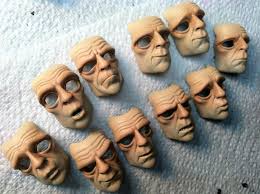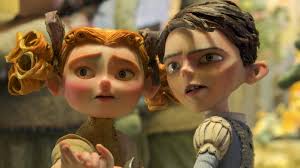Animation workshop
- Tami

- Nov 26, 2020
- 4 min read
Tuesday 17th November 2020
On Tuesday I found out that we had access to Adobe Creative Cloud but I would have known earlier if I had read every email I got. During the workshop we talked about Animation and also the course in general and what the seminar on the next Monday would be about. The seminar would be about concepts and would be about what direction we wanted to take our work in or what element we wanted to focus on as that would be individual. Some of the possible progression options are Stop-frame Animation, Film, Editing, Photography and Concept Design. We would need to understand the broad scope of Creative Media and gain ideas from that. We have to think about what we are interesting in. The current project gives us standalone outcomes which could help us think clearly about what parts we like and prefer. We could decide to do higher education, employment or internships but it's all about our ambitions. There needs to be clear evidence that we are thinking about our progression. We also need to think about what we have to offer. I have more notes about the seminar which I will upload later.
During the workshop, the word "lo-fi" was mentioned and while I have an idea of what that means in terms of music, I did not know what it meant in terms of art so I searched it up.
"Lo-fi photography ("lo-fi" meaning low-fidelity, referring to "any process which fails to achieve the accuracy and 'transparency'") refers to unconventional photographic practices, chosen for aesthetics, which give an impression of low quality." - Wikipedia, Lo-fi photography
We were also given many examples of different animation techniques. (All information is from Wikipedia pages unless otherwise stated)
Paper Animation -

Cutout animation is a form of stop-motion animation using flat characters, props and backgrounds cut from materials such as paper, card, stiff fabric or even photographs. The props would be cut out and used as puppets for stop motion. While sometimes used as a relatively simple and cheap animation technique in children's programs, cutout animation has also often been used as a highly artistic medium that distinguishes itself more clearly from hand-drawn animation. Cutout animation can be made with figures that have joints made with a rivet or pin or, when simulated on a computer, an anchor. These connections act as mechanical linkage, which have the effect of a specific, fixed motion.
Drawn Animation -

Traditional animation (or classical animation, cel animation, hand-drawn animation, 2D animation or just 2D) is an animation technique in which each frame is drawn by hand. The technique was the dominant form of animation in cinema until the advent of computer animation.
Modelled Animation -

Model animation is a form of stop motion animation designed to merge with live action footage to create the illusion of a real-world fantasy sequence.
Experimental Animation -

Experimental animation is a form of animation in which motion pictures have their own rhythm and movement where it has no narration or a specific structure in animated films. It is considered to be subjective and non-linear that deals with philosophic and spiritual concerns that the artists and film-makers convey.
Claymation -

Clay animation or claymation, sometimes plasticine animation, is one of many forms of stop-motion animation. Each animated piece, either character or background, is "deformable"—made of a malleable substance, usually plasticine clay.
Overhead Human Animation -

I didn't find much on this one but I think that image is what it is about.
3D Stop Motion -
Stop motion is an animated filmmaking technique in which objects are physically manipulated in small increments between individually photographed frames so that they will appear to exhibit independent motion or change when the series of frames is played back. Any kind of object can thus be animated, but puppets with movable joints (puppet animation) or plasticine figures (clay animation or claymation) are most commonly used.
Cel Animation -

A cel, short for celluloid, is a transparent sheet on which objects are drawn or painted for traditional, hand-drawn animation. Actual celluloid was used during the first half of the 20th century, but since it was flammable and dimensionally unstable it was largely replaced by cellulose acetate.
Green Screen -

Green screen basically lets you drop in whatever background images you want behind the actors and/or foreground. It's used in film production (and also in news and weather reports) to relatively simply place the desired background behind the subject/actor/presenter. (https://infocusfilmschool.com/filming-green-screen-guide/)
3D Digital Computer Animation -

Computer animation is the process used for digitally generating animated images. The more general term computer-generated imagery (CGI) encompasses both static scenes and dynamic images, while computer animation only refers to moving images. Modern computer animation usually uses 3D computer graphics to generate a two-dimensional picture, although 2D computer graphics are still used for stylistic, low bandwidth, and faster real-time renderings. Sometimes, the target of the animation is the computer itself, but sometimes film as well.
I didn't know there were that many but apparently there are more. After being given the introduction we were given a choice of 4 animation activities to get on with.
Working with narrative & character - moving around a space, using fixed lighting
Working with space and object, creating a game - creating a sequence, working from above
Working with space, object and colour, creating abstract animation about movement, consider the static element
Working with body & space, using green screen, consider movement & narrative, consider props (intro to Dragon Frame)
I did not get to do the Dragon Frame workshop but the other animation tasks were interesting to do. However, they were quite time consuming and as I am a person who prefers to do things as quickly as possible, I believe that I am not suited for animation in general, of course there are other reasons -like I don't enjoy it- but that is the biggest reason. On the other hand, I am quite interested in green screen-type things which I haven't experimented with yet.
Most of my work in documented in my orange book and they are almost completely copied into these blogposts. Over the past few days I haven't been keeping up with blogposts (most likely due to the stress of moving) but I have obviously still been writing everything in the orange book which I do not plan to submit, however as I sometimes do, here are pictures of the pages from the book.
The last picture isn't what the completed page looks like but it is how it looked at the time I took the picture.

















Comments